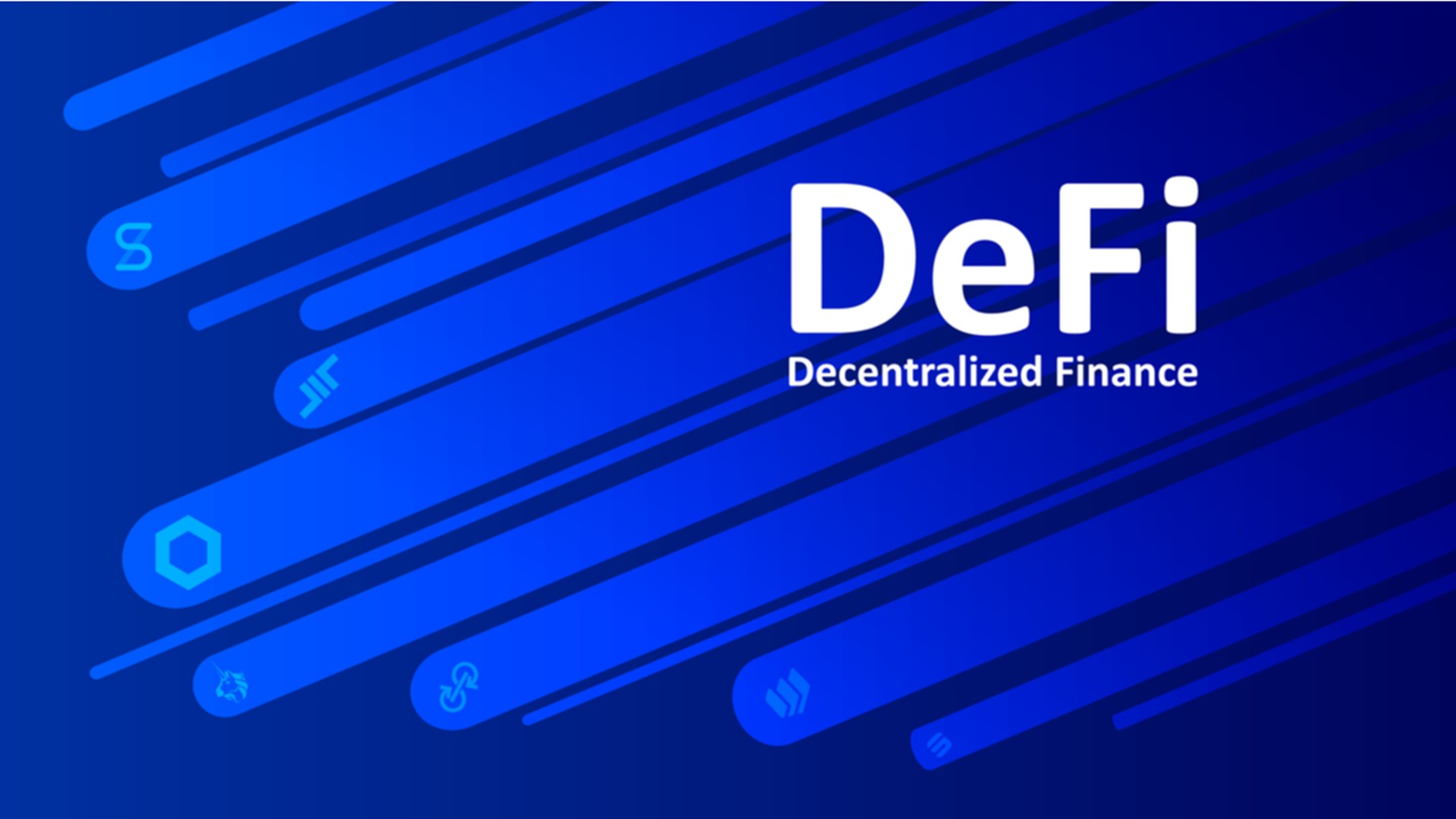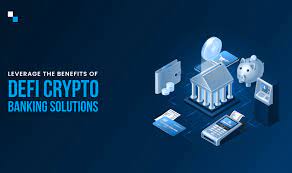
James Carter
What is DeFi banking crypto?: Revolutionizing the Future of Finance

The financial landscape has been undergoing a significant transformation with the rise of decentralized finance (DeFi) banking crypto. DeFi banking crypto refers to the utilization of blockchain technology and cryptocurrencies to recreate traditional banking services in a decentralized manner. This innovative approach is gaining immense popularity due to its potential to provide financial inclusivity, transparency, and increased control over one’s funds. In this article, we will delve into the world of DeFi banking crypto, exploring its key components, advantages, risks, prominent projects, and its potential impact on the future of finance.
Overview of Traditional Banking
To grasp the significance of DeFi banking crypto, it is crucial to understand the limitations of traditional banking systems. Traditional banking involves centralized institutions acting as intermediaries to facilitate financial transactions, manage accounts, and provide lending services. However, these systems suffer from drawbacks such as limited accessibility, high transaction fees, lack of transparency, and slow processing times.
Introduction to Decentralized Finance (DeFi)
DeFi represents a paradigm shift in the financial industry by utilizing blockchain technology to create open and transparent financial systems without relying on intermediaries. It leverages smart contracts, which are self-executing agreements on the blockchain, to automate and enforce financial agreements. Key characteristics of DeFi include decentralized governance, open access, interoperability, and composability, enabling seamless integration between different protocols and applications.

Understanding DeFi Banking Crypto
DeFi banking crypto refers to the application of DeFi principles to traditional banking services using cryptocurrencies as the underlying medium of exchange. By leveraging blockchain technology, DeFi banking crypto offers numerous benefits such as enhanced accessibility, transparency, and reduced reliance on intermediaries. It enables users to engage in activities such as lending, borrowing, trading, and earning passive income, all within a decentralized ecosystem.
Components of DeFi Banking Crypto
Smart Contracts and Blockchain Technology:
Smart contracts are programmable agreements that facilitate automated and trustless transactions. They play a pivotal role in DeFi banking crypto by eliminating the need for intermediaries, reducing counterparty risk, and ensuring transparent and secure execution of financial operations.
Decentralized Exchanges (DEXs):
DEXs are platforms also enable peer-to-peer trading of cryptocurrencies, without the need for intermediaries. They leverage smart contracts to facilitate direct asset exchange. These allow users to retain control over their funds while benefiting from increased liquidity and reduced fees compared to traditional exchanges.
Lending and Borrowing Protocols:
DeFi banking crypto offers lending and borrowing protocols that enable users to lend their crypto assets and earn interest or borrow assets by collateralizing their holdings. These protocols employ algorithms to determine interest rates and collateral requirements, making the lending and borrowing
Stablecoins and Tokenization:
Additionally Stablecoins are cryptocurrencies pegged to a stable asset, typically a fiat currency, providing stability within the volatile crypto market
Liquidity Mining and Yield Farming:
Liquidity mining and yield farming are innovative concepts within DeFi banking crypto that incentivize users to provide liquidity to decentralized platforms. Users are rewarded with additional tokens or fees for contributing their assets to liquidity pools, boosting liquidity and allowing for efficient trading.
Advantages of DeFi Banking Crypto
Accessibility and Financial Inclusion:
DeFi banking crypto opens up financial services to individuals who are unbanked or underbanked, as it does not require traditional banking infrastructure or extensive documentation. Also anyone with an internet connection and a crypto wallet can participate, fostering financial inclusivity.
Transparency and Security:
Blockchain technology provides a transparent and immutable record of all transactions, ensuring that the financial operations within DeFi banking crypto are traceable and auditable. Additionally the use of smart contracts adds an additional layer of security by automating the execution of agreements without the need for intermediaries.
Elimination of Intermediaries and Lower Fees:
DeFi banking crypto removes the need for intermediaries, such as banks or brokers, reducing costs associated with their services. This enables users to benefit from lower transaction fees, higher interest rates on lending, and improved access to financial products and services.
High Yield Potential and Passive Income Generation:
DeFi banking crypto offers various opportunities for users to earn passive income through activities like lending, liquidity provision, and yield farming. These strategies can generate higher returns compared to traditional savings accounts, providing users with additional income streams.
Risks and Challenges of DeFi Banking Crypto
Smart Contract Vulnerabilities and Security Risks:
Additionally Smart contracts are not immune to bugs or vulnerabilities, and any flaws in their code can lead to financial losses. Users need to exercise caution and conduct thorough audits before interacting with DeFi protocols to mitigate these risks.
Regulatory and Compliance Challenges:
DeFi banking crypto operates in a relatively unregulated space, posing challenges for regulatory bodies to monitor and enforce compliance. The lack of clear regulations can expose users to potential risks such as scams, money laundering, and market manipulation.
Market Volatility and Price Risks:
Cryptocurrencies also known for their price volatility, which introduces risks for users engaged in DeFi banking crypto. Fluctuating token values can impact the collateralization ratios and loan-to-value ratios, potentially leading to liquidations and loss of funds.
Lack of User Education and Scams:
The decentralized nature of DeFi banking crypto makes it susceptible to fraudulent activities and also scams. It is essential for users to educate themselves about the projects they engage with, perform due diligence, and exercise caution to avoid falling victim to scams or Ponzi schemes.
WATCH THE VIDEO BELOW
Prominent Examples of DeFi Banking Crypto Projects
MakerDAO and DAI:
MakerDAO is a decentralized autonomous organization that issues the stablecoin DAI. Also It allows users to collateralize their crypto assets and generate DAI loans, which maintain a stable value pegged to the US dollar.
Compound Finance:
Compound Finance is a lending and borrowing protocol that enables users to lend or borrow various cryptocurrencies. Additionally Interest rates are determined algorithmically based on the supply and demand dynamics of each asset.
Aave:
Aave is a decentralized lending and borrowing protocol that allows users to lend or borrow cryptocurrencies while earning interest. It employs a unique feature called flash loans, which enable users to borrow assets without collateral as long as the loan is repaid within the same transaction.
Uniswap:
Uniswap is a decentralized exchange protocol that also enables users to swap ERC-20 tokens directly from their wallets. It employs an automated market maker mechanism, providing liquidity through liquidity pools and also incentivizing liquidity providers.
Synthetix:
Synthetix is a decentralized synthetic asset protocol that allows users to create and trade synthetic assets representing various real-world assets. Additionally these synthetic assets, or “synths,” are backed by collateral in the form of SNX tokens.
Future Outlook and Potential Impact
Additionally the rapid growth of DeFi banking crypto indicates its potential to disrupt and revolutionize the traditional financial system. As adoption continues to increase, DeFi banking crypto has the potential to reshape how financial services are accessed and delivered. However, several factors will influence its future outlook:
Adoption and Growth of DeFi Banking Crypto:
The adoption of DeFi banking crypto is expected to grow as more individuals and institutions recognize the benefits it offers. As user-friendly interfaces and infrastructure improve, the barriers to entry will be reduced, attracting a wider audience to participate in decentralized finance.
Integration with Traditional Banking Systems:
DeFi banking crypto is likely to integrate with traditional banking systems, creating hybrid models that combine the benefits of both centralized and decentralized finance. This integration can provide users with seamless access to a broader range of financial services and bridge the gap between traditional and decentralized finance.
Regulatory Developments and Compliance Standards:
Regulatory frameworks are also evolving to address the challenges and risks associated with DeFi banking crypto. As regulations and compliance standards are established, they will bring legitimacy and stability to the industry, fostering institutional adoption and investor confidence.
Summary
DeFi banking crypto represents a groundbreaking evolution in the financial industry, leveraging blockchain technology and cryptocurrencies to recreate traditional banking services in a decentralized and inclusive manner. It offers advantages such as accessibility, transparency, lower fees, and the potential for high-yield passive income.
However, it also presents risks and challenges that users must be aware of, including smart contract vulnerabilities and regulatory uncertainties. Prominent projects such as MakerDAO, Compound Finance, Aave, Uniswap, and Synthetix showcase the potential of DeFi banking crypto in providing innovative financial solutions. As the industry matures and evolves, the future impact of DeFi banking crypto is poised to reshape the global financial landscape, fostering financial inclusivity, and unlocking new possibilities for individuals worldwide.
Latest
Blockchain
09 May 2024
Blockchain
19 Apr 2024
Blockchain
16 Jan 2024
Blockchain
31 Aug 2023
Blockchain
24 Jun 2023
Blockchain
24 Jun 2023













